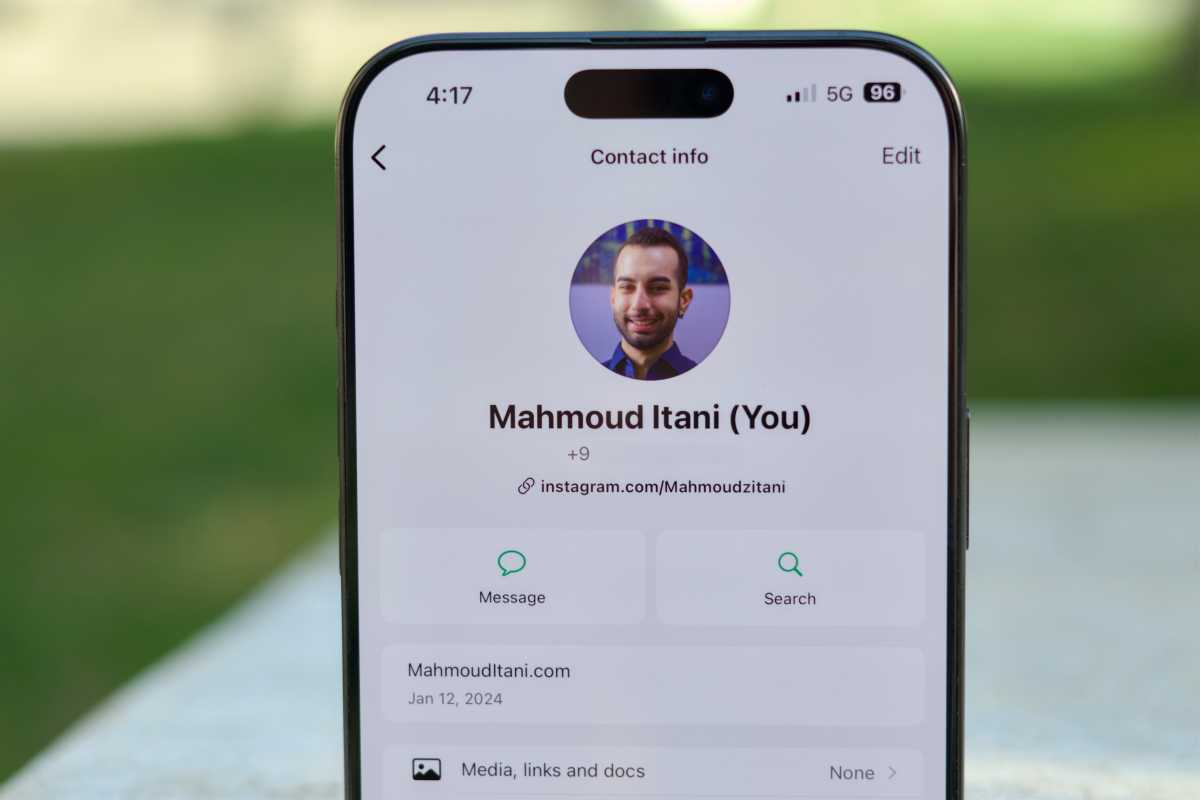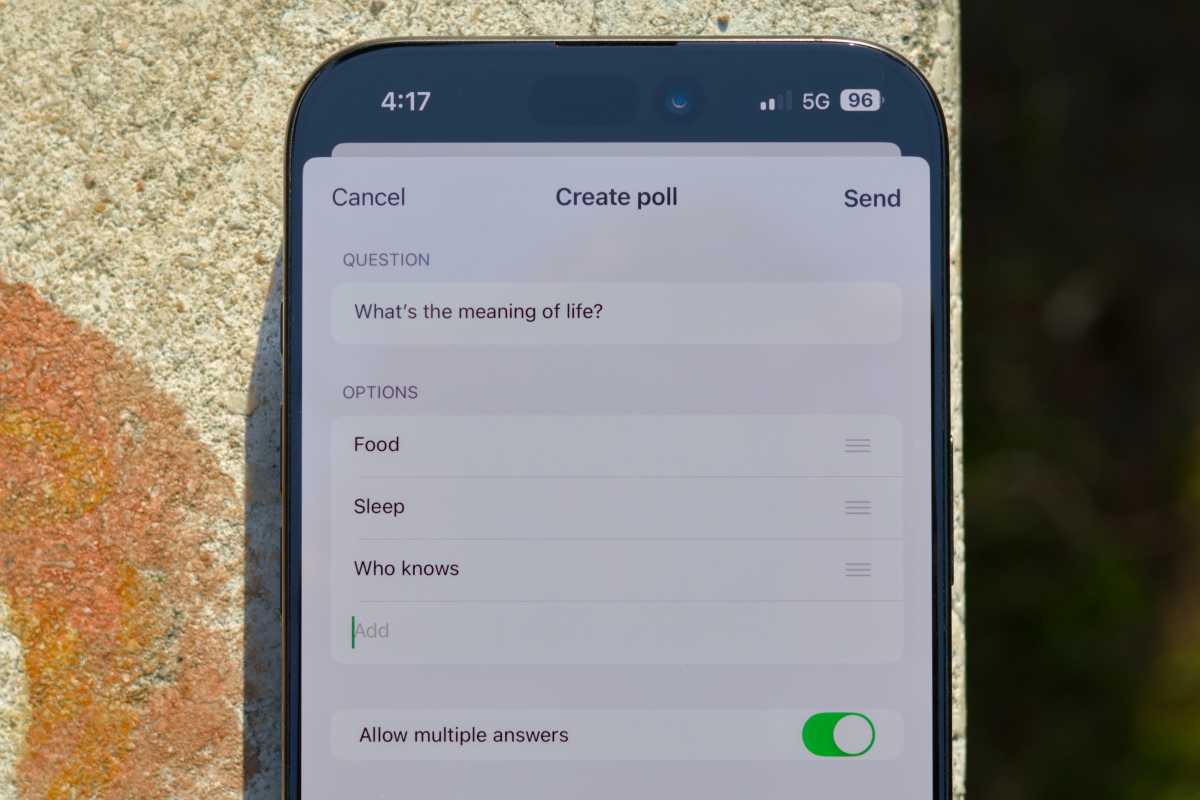What I really love about smartphones is the extensive app catalog, which lets users try and pick between a wide range of options. If you don’t like how a certain application works, you can typically find solid alternatives in the same category that better match your expectations. However, this generally doesn’t apply to social media and communication apps, as the network effect locks us into the platforms our contacts use.
In many regions, WhatsApp has become the default instant messaging service, connecting billions of users to their friends and family members, and even some businesses. Despite that, some people, including myself, still rely on iMessage for a number of reasons, such as concerns over Meta’s privacy practices. Nevertheless, when I text my friends on iMessage, I can’t help but notice how bare-bones the experience feels. Here are seven WhatsApp features that iMessage needs right now:
1. Enhanced roaming experience
My biggest annoyance with iMessage is how fragile and high-maintenance the service can be when roaming. The moment you eject your physical SIM card or turn off the eSIM, your phone number gets deregistered from iMessage. This downgrades all of your chats to SMS (as most international carriers haven’t adopted RCS yet) and incurs fees when chatting with friends abroad.

Mahmoud Itani / Foundry
To avoid this, you could either expose and use your Apple Account’s email address as the iMessage ID or register the new SIM card’s foreign number on iMessage. Both routes are far from ideal; especially the latter, requiring your contacts to become aware of and save a new number whenever you travel. While newer iPhones with dual-SIM support make this problem more manageable, there are still instances when it causes a headache.
WhatsApp, on the other hand, lets you use the phone number you’ve registered—as long as no one with physical access to the associated SIM card tries to create an account. So, you can remove the SIM card from your iPhone for whatever reason without worrying about disconnection. There’s nothing stopping Apple from copying this intuitive, safe approach.
2. Extensive user profiles
Other WhatsApp perks I like include profile bios and social media links (currently in beta). These enable users to introduce themselves and showcase a more comprehensive profile. Contact cards on iOS already support social account handles, notes, location pins, etc. All Apple has to do is let us optionally reveal some of these fields to our iMessage contacts, just as we can now with names and profile photos.

Mahmoud Itani / Foundry
3. Status updates and stories
Despite Instagram being the go-to platform for uploading ephemeral stories, some users opt for WhatsApp when sharing more private moments. While it’s not technically texting, posting stories in the form of status updates—shared photos and videos that disappear after 24 hours—has become an integral part of everyday communication, and iMessage should catch up—it doesn’t even have an online status feature.
Apple could put its own twist on it, with settings to limit visibility, add Animoji, and hook into Apple intelligence, or offer the option to turn off the feature altogether as Signal does. But
iMessage needs to get with the times.
4. Customized conversations
Another trend I’ve noticed in modern-day texting is the prevalence of chat themes. When I glance around in crowded public spaces, colorful chat bubbles and wallpapers always stand out to me. The feature, long supported by Instagram DMs, Facebook Messenger, and Telegram, recently launched on WhatsApp, and I’d love to see it on iMessage, too.
The latest iOS updates have enabled users to personalize the iPhone experience more than ever before. From the Lock and Home Screens to the Control Center and Photos app, layouts have never been so customizable. It’s time for iMessage to catch up.

Mahmoud Itani / Foundry
5. Simpler file sharing
One thing I love about WhatsApp is the efficiency of its file-sharing functions. There’s an in-app attach document button, letting you directly browse through your local files without exiting the messenger.
Conversely, iMessage requires you to leave the Messages app when someone requests a file. You need to find the Files app, launch it, locate the desired document, tap the share button, pick the iMessage contact, and hit send. Apple could address this unnecessary complexity by introducing a Files app in iMessage, similar to the existing Photos, Music, and Camera mini apps.
6. Better group chats
Beyond one-on-one conversations, iMessage should upgrade the group chat experience. Currently, the service still doesn’t support typing indicators and read receipts in groups. Another ridiculous iMessage limitation is the inability to leave a group when it has only three members. A workaround (of sorts) is adding a fourth person to the group then leaving, but the new member will be stuck with the other two in said group.
Additionally, a neat WhatsApp group feature is polling, which makes organizing and planning events more seamless. iMessage should copy this handy function, complementing the new Apple Invites app.

Mahmoud Itani / Foundry
7. Managed conversations
Lastly, iMessage should borrow the ability to star individual messages for future reference. While the service lets you pin conversations and certain types of attachments and mark messages as unread, there’s no straightforward way to bookmark texts for future reading.
Similarly, Apple’s Messages app still lacks support for archiving conversations and creating custom lists to organize them. This omission makes it impossible to filter chats based on their type or context.
Texting has evolved, but iMessage hasn’t
It’s no secret that Apple tends to avoid shocking its users with major changes. Nonetheless, the gradual evolution of iMessage has been too slow compared to rival IM solutions. Third-party developers have been innovating and baking fun and useful features into their texting platforms, while iMessage hasn’t dramatically changed in years.
Given the widespread adoption of iMessage, it would take years for it to lose relevance in the US. That’s not to say it’s impossible, though. People are slowly warming up to alternative apps, and WhatsApp continues to grow in North America. (Outside the U.S., it’s already huge.) If Apple wants to maintain its position in the texting space, a position which helps to cement the dominance of its overall product ecosystem, it must upgrade iMessage meaningfully, not just give it a superficial glassy UI in the next update.







